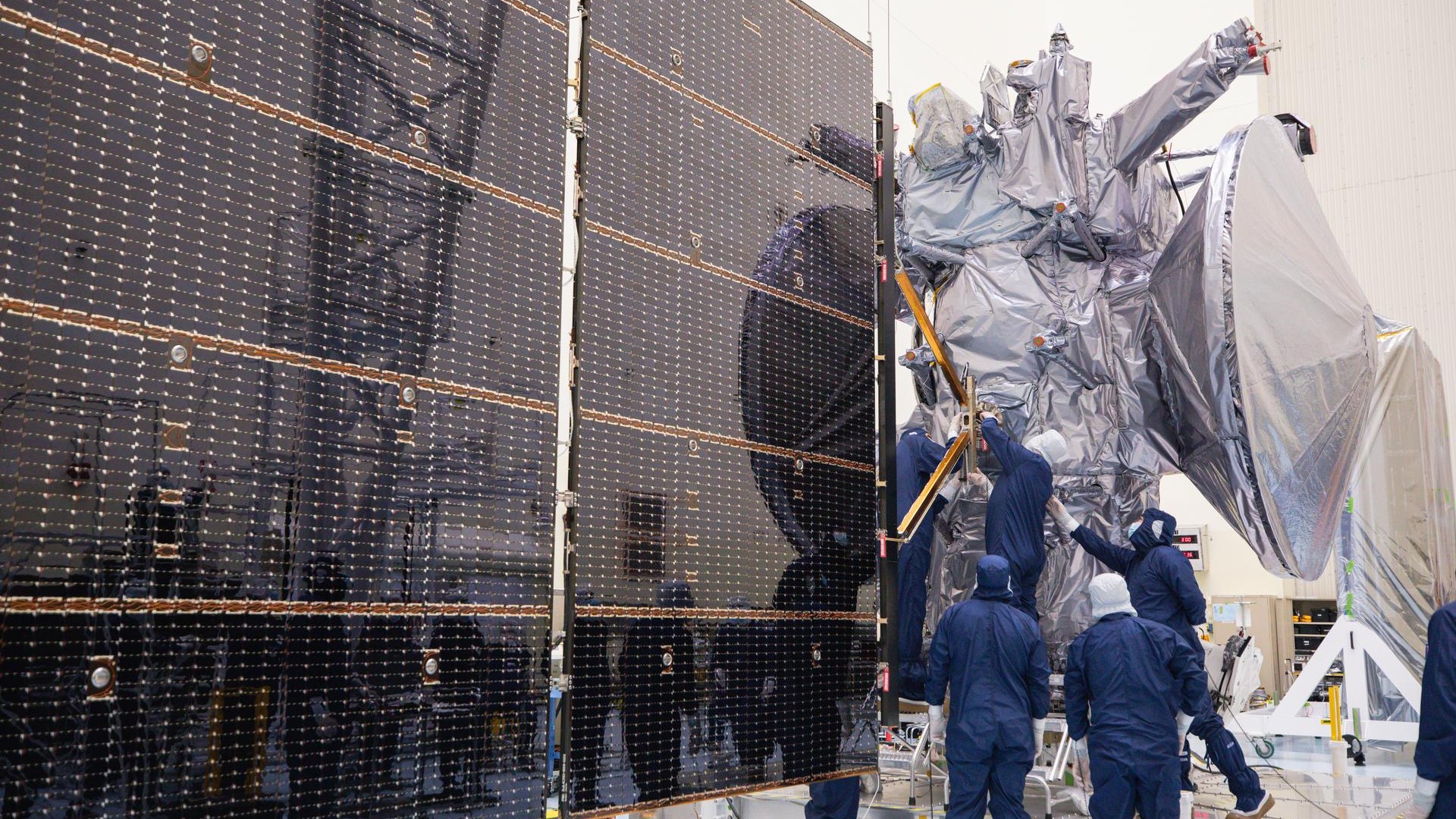NASA clears Europa Clipper mission for Oct. 10 launch despite Jupiter radiation worries
NASA's Europa Clipper mission is on track for an October launch following tests confirming the spacecraft can handle the harsh conditions around Jupiter's intriguing moon.

Editor's note: NASA announced on Oct. 11 that Europa Clipper will launch no earlier than Monday (Oct. 14). "Following Hurricane Milton, teams are continuing to do checkouts to ensure flight readiness," agency officials wrote in an update.
NASA's Europa Clipper mission is on track for an October launch following tests confirming the spacecraft can handle the harsh radiation environment around one of Jupiter's most intriguing moons.
The Europa Clipper spacecraft aims to study Jupiter's icy moon Europa, which is believed to harbor a subsurface ocean with twice as much as water as in all of Earth's seas combined. Equipped with nine instruments, including cameras, ground-penetrating radar, and spectrometers, the spacecraft will conduct multiple close flybys of the moon and investigate the environment beneath Europa's icy crust and search for signs of life as we know it.
The spacecraft is scheduled to launch atop a SpaceX Falcon Heavy rocket from Launch Complex 39A at NASA's Kennedy Space Center in Florida, with a target launch window opening on Oct. 10, the space agency announced on Tuesday (Sept. 3).
"Clipper's primary science goal is to determine whether there are places below the surface of Europa that could support life," NASA officials said in the announcement.
"The mission's three main science objectives are to understand the nature of the ice shell and the ocean beneath it, along with the moon's composition and geology. The mission's detailed exploration of Europa will help scientists better understand the astrobiological potential for habitable worlds beyond our planet."
Our mission to explore Jupiter's moon Europa remains on track, with a launch period opening on Oct. 10. We recently conducted extensive testing of our spacecraft's transistors, and results suggest they're ready to support our baseline mission. https://t.co/M4hClJroBB pic.twitter.com/GO8smWQpWxAugust 28, 2024
Previous concerns had been raised about the spacecraft's ability to survive the high-radiation environment created by Jupiter's powerful magnetic field when its transistors — devices that control the flow of electricity on the probe — suffered failures at lower radiation doses than expected.
Breaking space news, the latest updates on rocket launches, skywatching events and more!
However, more recent tests have confirmed that the transistors "can support the baseline mission," NASA officials said in a statement. With an expected arrival at Jupiter in 2030, the baseline mission includes flying by Europa nearly 50 times between 2031 and 2034.
The next major milestone for the mission is a review called Key Decision Point E, which will take place on Sept. 9. At that time, NASA will determine if the Europa Clipper spacecraft can proceed into final launch preparations.

Samantha Mathewson joined Space.com as an intern in the summer of 2016. She received a B.A. in Journalism and Environmental Science at the University of New Haven, in Connecticut. Previously, her work has been published in Nature World News. When not writing or reading about science, Samantha enjoys traveling to new places and taking photos! You can follow her on Twitter @Sam_Ashley13.
